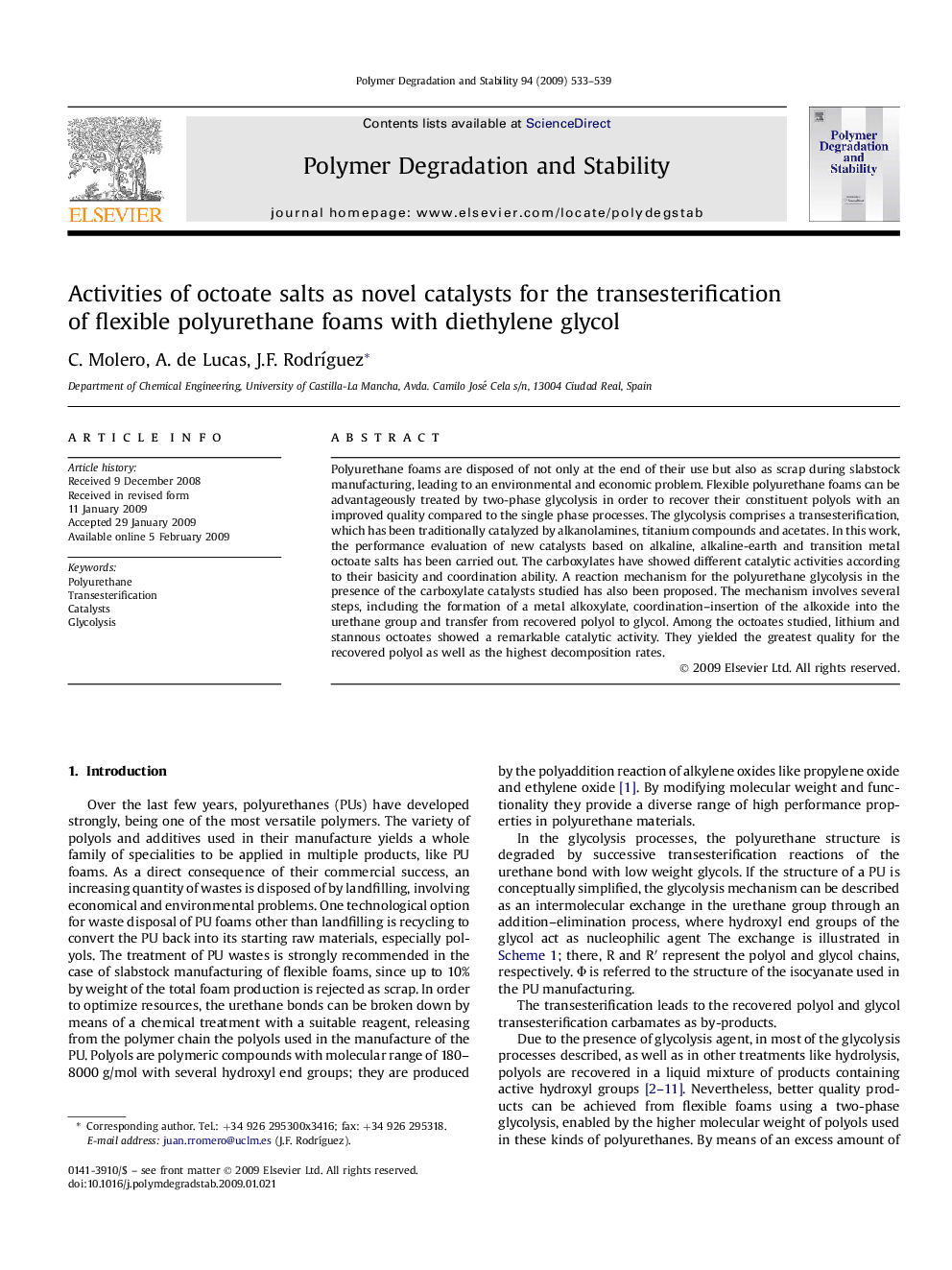| Article ID | Journal | Published Year | Pages | File Type |
|---|---|---|---|---|
| 5203503 | Polymer Degradation and Stability | 2009 | 7 Pages |
Abstract
Polyurethane foams are disposed of not only at the end of their use but also as scrap during slabstock manufacturing, leading to an environmental and economic problem. Flexible polyurethane foams can be advantageously treated by two-phase glycolysis in order to recover their constituent polyols with an improved quality compared to the single phase processes. The glycolysis comprises a transesterification, which has been traditionally catalyzed by alkanolamines, titanium compounds and acetates. In this work, the performance evaluation of new catalysts based on alkaline, alkaline-earth and transition metal octoate salts has been carried out. The carboxylates have showed different catalytic activities according to their basicity and coordination ability. A reaction mechanism for the polyurethane glycolysis in the presence of the carboxylate catalysts studied has also been proposed. The mechanism involves several steps, including the formation of a metal alkoxylate, coordination-insertion of the alkoxide into the urethane group and transfer from recovered polyol to glycol. Among the octoates studied, lithium and stannous octoates showed a remarkable catalytic activity. They yielded the greatest quality for the recovered polyol as well as the highest decomposition rates.
Related Topics
Physical Sciences and Engineering
Chemistry
Organic Chemistry
Authors
C. Molero, A. de Lucas, J.F. RodrÃguez,
